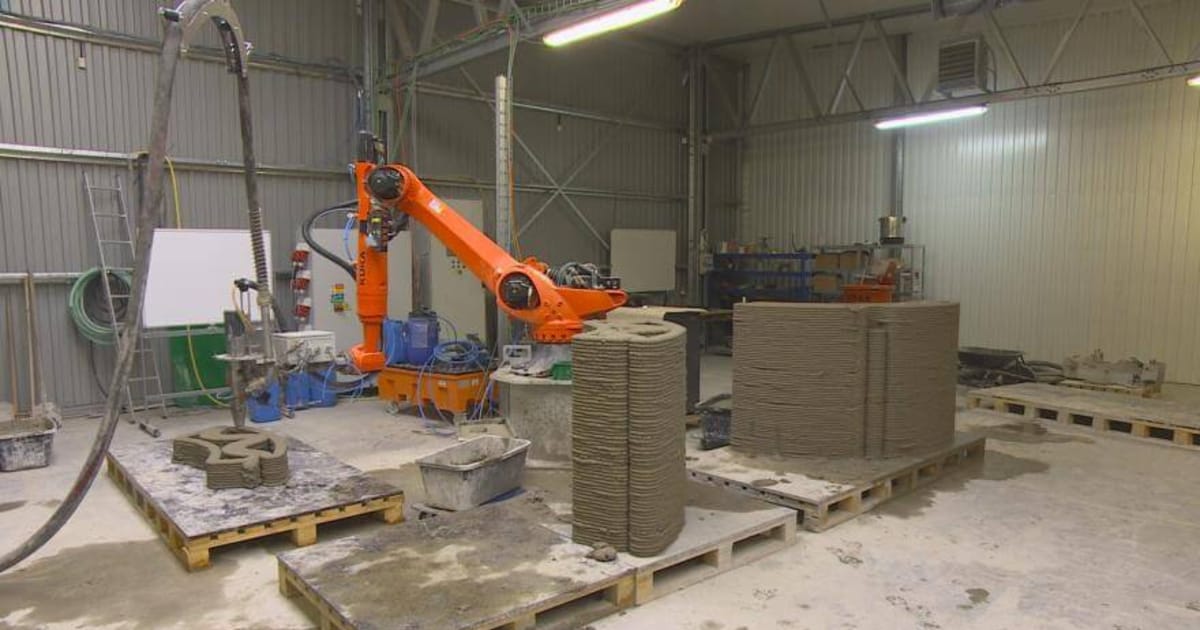Resistant to small arms, grenades, as well as anti-tank missiles, anti-tank barriers produced by the Czech company ICE Industrial Services have been tested in a ballistic center and correspond to a number of NATO standards.
<!–
–
3D printing is not the first activity of the company headed by Tomáš Vránek, which designs and builds new machines and automation lines for, among others, the automotive industry: yet, in recent years, it sought to diversify by exploring the possibilities of 3D printed concrete, a technology in vogue in many start-ups in the country. An investment of around CZK 50 million in technology which the company claims enables it to create rough structures up to five times faster and save up to 70% material compared to formwork classic cast. Concrete printed parts are hollow and can have various shapes.
The war in Ukraine was a trigger for the company, which decided to put its know-how to good use. Jiří Vambera is responsible for innovation for the company:

<!–
–
“The barriers have different shapes that can be combined with each other. The total process begins with the preparation of the material. After transporting the material, we start by depositing the layers with our robot. We print the desired shapes, which have a number of cavities that can be filled with sand once the barriers have reached their final destination. We can produce a basic shape in about 20 minutes, so it is possible to print 20-30 per day. »
20 minutes, then, just to print a meter-high barrier. After printing, the concrete must still dry, and it is ready to be transported the next day. The printing machine can easily be programmed for any other shape or thickness. The company produces different types of barriers depending on the type of missiles it must be able to withstand.
The material itself only reaches full strength after about 20 days, but it can provide some protection just a few days after being printed, explains Jiří Vambera.
“On the second day, the barriers already have a resistance of around 25%, which allows them to be moved. And after a week, the resistance is 80%, so it is possible to carry them for a greater distance. In theory they could be printed on location, but given the material I think it makes sense to run the printer in a safe area away from the battlefield. On the other hand, it does not make sense to send the concrete to Ukraine across the whole of Europe. »

<!–
–
Barriers can be stacked on top of each other or placed side by side like building blocks.
Beyond building and delivering them to Ukraine, the Moravian company, which employs 170 people, also hopes to eventually send 3D printers to this war-torn country and train Ukrainians in their use. A few concrete plants, not too close nor too far from the front lines, could contribute to the war effort by producing these new kind of anti-tank barriers.

<!–
–
Finally, as entrepreneur Tomáš Vránek points out, the barriers are only a first step, the next being to participate in the reconstruction of the buildings destroyed by the Russian bombardments. One of ICE Industrial Services company’s original plans was to print entire homes using this 3D technology, which could be leveraged to get the country back on its feet: “There are countless destroyed buildings there and there certainly won’t be enough capacity to rebuild them all. The machines could help build new homes. Finally, since the barricades are modular, they can then be taken apart and used to build utility buildings”Tomáš Vránek recently explained to the Czech press.
–


